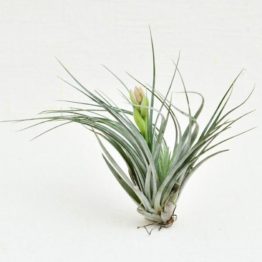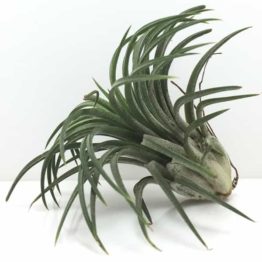




Tillandsia are also know as epiphytes. Epiphytes are also referred to as air plants or aerophytes. Epiphytes, under most conditions do not need soil for growth, are not considered parasitic and attach to their host as a means of support only. Air plants mainly repoduce by generating pups or offsets. One plant can easily produce as many as 12 offspring. Tillandsia are usually not produced or cultivated for their flowers, even though most will bloom at regular intervals. Many of these species tend to take on a change in leaf color when it comes time to bloom. The leaves will change from green to a reddish or purple hue. When a plant changes leaf coloring prior to blooming, this usually means they are monocarpic. Monocarpic plants are plants that flower one time prior to dying. As stated previously, the pups from the dying plant will continue to grow and will also bloom at some point in the future.
For the most part, the plants can tolerate a wide range of temperatures. Temperatures from 32 to 10 degrees Celsius or 90 to 50 degrees Fahrenheit. Frost for prolonged periods can cause damage to all but the hardiest of these plants. Tillandsia, has other benefits and properties. The plants contain properties that have been used to inhibit pollen-related allergies.
Care for Air Plants
- They can survive with water misting.
- Provided the atmosphere should not be too dry.
- Use mist twice to thrice a week in summer and once a fortnight in cooler weather.
- Run them under a bit of water if they appear to be particularly dry.
- Keep in bright indirect sunlight.
- Spray the fertilizer on the whole plant.

